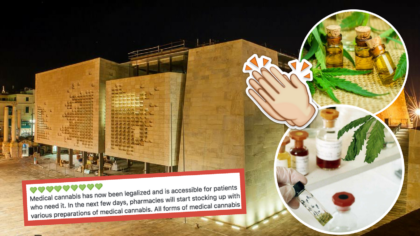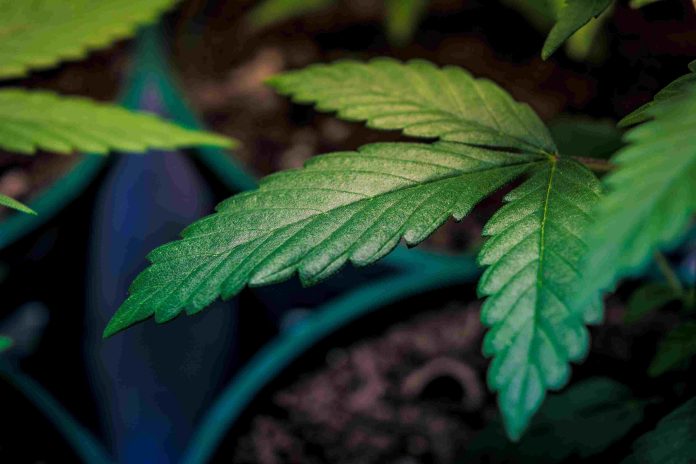Since the worldwide liberalization of cannabis, the debate surrounding a reasonable THC limit while driving is intensifying in many countries. On the same token, countries enforce varied national regulations when it comes to DUI-driving. Thus, each country determines exactly how much THC must be present in your system to be considered “intoxicated” or “impaired.”
In the U.S., many states with legalized cannabis have established a maximum limit of five nanograms of active THC in the system. Canada will only set precise limits when they finalize their legalization, and the regulations across Europe vary greatly. While only active THC is measured in most parts of Europe and the USA, the non-psychoactive metabolite THC-COOH also plays a role in driving impairment in some EU countries and a few US states. In some countries, a salivary or urine test is mandatory before blood testing, in others, pre-testing is voluntary, and elsewhere, only the trained eye of the police and the blood parameters count. However, in all countries mentioned, only the blood parameters can serve as court evidence. The penalties are usually fines or driving bans that can last many years if not an entire lifetime.
Germany has the strictest per se limit
In Germany, the number of cannabis consumers ordered to carry out a drug test has steadily increased since the mid-1990s. If more than 1 nanogram(ng) of active THC is detected in a roadside blood serum test, the driver’s license will be withdrawn by the driving license authority. The German limit is the strictest in comparison with other countries which have defined a per se value, and not only because 1ng THC causes no observable effects. While most countries’ measurements are determined in total blood — nanograms of THC per milliliters of blood — the Federal Republic of Germany, on the other hand, measures the THC content in the blood serum only, which leads to a nanogram count more than twice as high.
Even Switzerland, which has a precisely defined law for DUI-offenses, has a much higher limit. The Swiss limit is 1.5 ng THC in total blood. At first glance, the German limit of 1 ng/ml appears very similar. If, however, the fact that the Swiss limit value is determined in total blood and not in the serum, a limit value of 3 ng/ml of serum is calculated. With this adjustment, the limit in Switzerland (according to German reading) is closer to 3 ng.
It is also controversial to determine a precise THC-COOH value, which could shine a light on consumption intensity and thus the frequency of marijuana use. “Until now, it was considered certain that at least the detection of specific metabolic products of the cannabis main active substance THC in the hair proves a consumption without doubt. A researcher at the Institute of Legal Medicine at the University Hospital of Freiburg around the toxicologist, Prof. Dr. Volker Auwärter has established through experimental work that this conclusion is not permissible,” the “Scientific Reports” wrote in October 2015. Also, some US states, including some that have legalized marijuana for medicinal use, have zero-tolerance laws for marijuana-influenced driving, which makes the presence of THC-metabolites (which can linger for weeks after use) illegal.
Which limit applies where?
Austria: No specific limit, any “impairment,” blood test if suspected
Belgium: 1ng/ml blood
Croatia: No specific limit, any “impairment,” blood test if suspected
Cyprus: No specific limit, any “impairment,” blood test if suspected
Czech Republic: 2ng/ml blood
Denmark: 1ng/ml blood
Estonia: No specific limit, any “impairment,” blood test if suspected
Germany: 1ng in the blood’s serum, equivalent to 0.5ng in the system. THC-COOH testing
Finland: No specific limit, any “impairment,” blood test if suspected
France: No specific limit, any “impairment,” blood test if suspected
Hungaria: No specific limit, any “impairment,” blood test if suspected
Ireland: 1ng/ml blood
Italy: No specific limit, any “impairment,” blood test if suspected
Latvia: No specific limit, any “impairment,” blood test if suspected
Lithuania: No specific limit, any “impairment,” blood test if suspected
Luxembourg: 1ng/ml blood
Malta: No specific limit, any “impairment,” blood test if suspected
Netherlands: No specific limit, testing only at random
Norway: 0.4-1 Micromol/ml (not Nanogram)
Poland: No specific limit, any “impairment,” blood test if suspected
Portugal: No specific limit, any “impairment,” blood test if suspected
Switzerland: 1.5ng/ml blood
Romania: No specific limit, any “impairment,” blood test if suspected
Slovenia: No specific limit, any “impairment,” blood test if suspected
Slovakia: No specific limit, any “impairment,” blood test if suspected
Sweden: No specific limit, any “impairment,” blood test only if suspected
Slovenia: No specific limit, any “impairment,” blood test if suspected
United Kingdom: 2ng/ml blood
Canada and The United States of America
Canada: Currently no limit, impairment has to be proven in court. Planned for 2018:
- 2 ng but less than 5 ng of THC/ml: Having at least 2 ng but less than 5 ng of THC per milliliter (ml) of blood within two hours of driving would be a separate summary conviction criminal offense, punishable only by a fine. This lower level offense is a precautionary approach that takes into account the best available scientific evidence related to cannabis. This offense would be punishable by a maximum fine of up to $1,000.
- 5 ng or more of THC/ml: Having 5 ng or more of THC per ml of blood within two hours of driving would be a hybrid offense. Hybrid offenses are offenses that can be prosecuted either by indictment, in more serious cases, or by summary conviction, in less serious cases.
- Combined THC and Alcohol use: Having a blood alcohol concentration of 50 milligrams (mg) of alcohol per 100ml of blood, combined with a THC level greater than 2.5 ng per ml of blood within two hours of driving would also be a hybrid offense.
USA: Limits vary across states
Standards in states where cannabis is illegal
Montana: 5ng/ml blood
Ohio: 2ng/ml blood
Pennsylvania: 1ng/ml blood
Standards in states where cannabis is legal
Washington State: 5ng/ml blood
- Drivers with less than 5ng/ml of blood can still be sentenced for driving “affected by” cannabis when independent evidence proves driving skills were diminished “to an appreciable degree” by the THC in the suspect’s system.
Colorado: 5ng/ml blood
States with legal Cannabis and without per se standards
Alaska: No specific limit, blood test if suspected
California: You are considered to be “under the influence” of marijuana in California when:
- You are impaired as a result of marijuana consumption
- There is an obvious impairment of mental or physical abilities
- You can no longer drive a vehicle with the caution of a sober person, using ordinary care, under similar circumstances
Oregon: The prosecutor must prove that the driver was “adversely affected to a noticeable or perceptible degree by cannabis.”
Nevada: 2.0 ng/ml blood
Massachusetts: No specific limit, blood test if suspected. A person is suspected of driving “under the influence” if cannabis consumption “diminished the person’s ability to operate a motor vehicle safely.”
Maine: 5.0 ng/ml blood
District of Columbia: The prosecutor must prove that the driver was “adversely affected to a noticeable or perceptible degree by cannabis.”
States where any THC-traces in your system will cause legal trouble:
Arizona, Delaware, Georgia, Illinois, Indiana, Iowa, Michigan, Oklahoma, Rhode Island, South Dakota, Utah, and Wisconsin.
Experts call for an adjustment
Professor Auwärter, who advises the German Federal Government as a member of the expert committee on DUI questions, criticizes the lack of a scientific b+. In one case of a quasi-ineffective amount of THC in a driver’s system, the withdrawal of their license was pending. On the one hand, 0.05 percent alcohol in the system is legal yet doubles the accident risk compared to 0.00 percent alcohol in the system. For THC, even after any psychoactive effect is long gone the applicable limit remains at 1 ng of blood serum, Auwärter states. According to Auwärter, cannabis-influenced drivers cause far fewer accidents than drunk drivers.
Cannabis, unlike alcohol, does not lead to disinhibition — a lack of restraint manifested in disregard for social conventions, impulsivity, and poor risk assessment. The ability to decide to stay sober and drive or smoke marijuana and walk is not influenced by cannabis ingestion. Additionally, a cannabis-influenced driver was shown to be much more cautious than an alcohol-influenced individual, as Auwärter pointed out in 2014 during the meeting of the city of Frankfurt on the subject of cannabis model projects. Auwärter considers the current THC limit to be too low. In an Interview with “Süddeutsche Zeitung,” Auwärter called for an adjustment to “2-5” ng/ml of blood.
DUI on the bicycle
In Germany, the same DUI-related rules apply to cyclists and automobile drivers. Anyone who rides a bicycle under the influence of cannabis can lose their driver’s license. Dr. Benno Hartung and scientists from the University of Düsseldorf wanted to know more precisely whether cannabis-influenced cyclists are truly as dangerous. The scientists observed 14 people before and after the consumption of one, two, and then three joints on a bicycle course designed to test their riding ability under the influence of cannabis. All subjects were regular cannabis users who claimed to consume between one gram per week and one gram per day. In total, the participants were allowed to smoke 38 Bedrocan joints, and complete the course again after each joint. In the evaluation, the scientists could not recognize any differences in driving style. Whether one, two or three joints were smoked, the bikers mastered the course just as easily as before the consumption of cannabis.
Hartung, however, warns not to overestimate the results because the study is not representative due to its low number of participants. At the same time, he criticized how it is very difficult in Germany to receive support for realistic studies on the effects of illicit drugs in road traffic.
credit:marijuana.com










